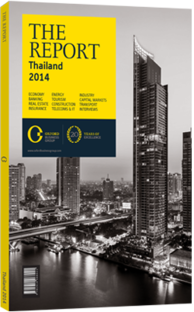Into the digital era: Moving forward with the digitisation of national TV broadcasting
The end of 2013 saw the Thai broadcasting authorities finally begin the licence bidding process for some 48 new digital TV channels – a move that may transform the current landscape of the media, advertising and creative industry. The move is being implemented by the National Broadcasting and Telecommunications Council (NBTC), which has been charged with completing it within the time frame of the 2012-16 digital master plan. The NBTC will also regulate the new market and hold channels to its code of conduct.
The council is thus in charge of re-allocating radio spectra across the board. Around half of this available spectrum is currently being used by the existing six free-to-air (FTA) analogue channels, and the rest by other sectors, such as telecoms. The decision has already been taken to use the second-generation digital video terrestrial broadcasting system (DVB-T2) as standard for the new channels, bringing the Thai digital TV system into line with those of other ASEAN states. In 2012 ASEAN ministers decided on DVB-T2 as the regional standard, providing a potential market of 500m for any set-top box manufacturer targeting the region.
Issuing New Licenses
uring the digitisation process 24 licences for commercial channels were issued, divided into four segments: high definition (HD) variety TV (seven channels), standard definition (SD) variety TV channels (seven channels), news programmes in SD (seven channels), and children’s and family programmes in SD (three). A further 12 channels will be made available for community broadcasting, and 12 more for public broadcasting. The analogue system will be gradually switched off from the start of 2015, although the full transition will not be completed for some years after that. In July 2013 the NBTC announced that the Royal Thai Army (RTA) and Public Relations Department (PRD) analogue stations – Channel 7 and Channel 5 are owned by the RTA and Channel 11 and the Thai Public Broadcasting Service (TPBS) belong to the PRD – would be the last required to switch over, with a five-year period allowed, during which they would provide analogue and digital broadcasts. The 2012-16 plan, however, sees 95% digital coverage, nationwide, by 2015, with subsidised coupons available for the final year to enable complete coverage by the plan’s end. This recognises that one of the challenges is the low income of many Thais, who may not be able to afford the set-top box or a new digital TV. The figures for satellite-TV subscribers give some encouragement, as set-top boxes for satellite can also receive digital signals, as can cable channels. With Nielsen and TrueVisions data showing satellite and cable penetration at 64% in 2012, the target looks more feasible.
Auction Goes Ahead
Yet there were several delays in auction dates. This gave potential investors more time to draw up their plans, while it was also an indicator of the major infrastructure needs such a digital expansion requires. The exact rules and regulations on what the new channels may broadcast, in terms of mix of content, also needed clarification. Then, in December 2013, during a two-day auction, which saw intense competition with the government earning BT50.9bn ($1.7bn), 29 companies submitted 41 applications to bid for the commercial TV licences. Bangkok Entertainment Company (BEC) Multimedia won three licences, while Nation Multimedia Group, GMM Grammy, TrueVisions and Mass Communications Organisation of Thailand received two licences each.
It is expected that after the launch there will also be some competition with the analogue FTA channels, while they are still available, although existing pay-TV providers may also see digital taking some audience from them. Networks will initially be paying for the new infrastructure and start-up costs, meaning a likely loss to begin with, which may be challenging for smaller outfits to sustain – particularly in a challenging advertising market, with GDP growth slowing. Still, the longer term should see Thai audiences enjoying a wider range of broadcasts, with the old, six-channel FTA dominance broken. A more private-sector-driven TV industry may result, with room and opportunities for new entrants.
You have reached the limit of premium articles you can view for free.
Choose from the options below to purchase print or digital editions of our Reports. You can also purchase a website subscription giving you unlimited access to all of our Reports online for 12 months.
If you have already purchased this Report or have a website subscription, please login to continue.

